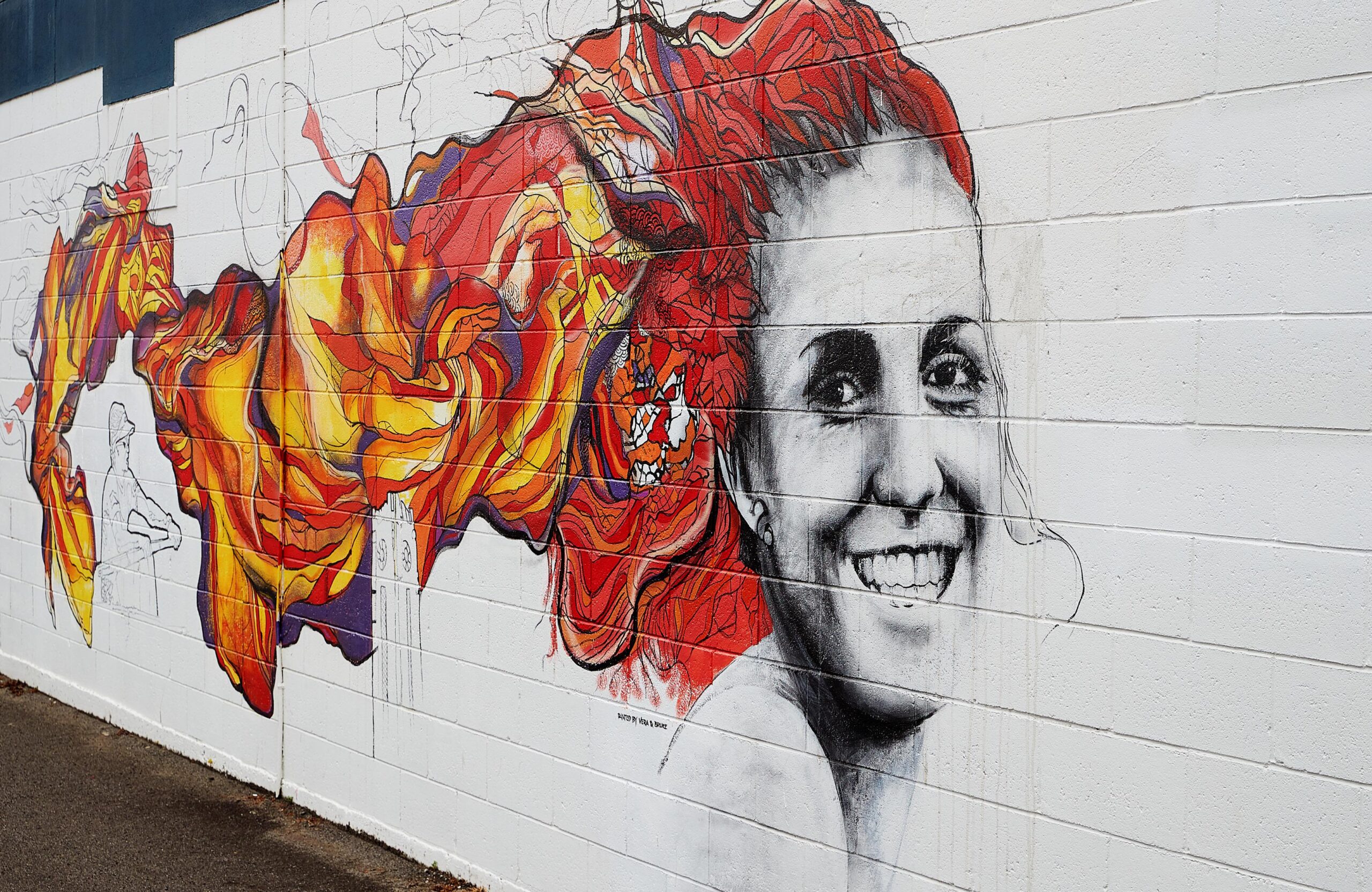Why the arts matter now more than ever


By Paul Bradley, Creative Waikato
Image: Street art by Vera Bucsu and Bruce McLachlan, 11 Empire Street, Cambridge
In times of crisis, like this pandemic, there can be a tendency to want to sideline the arts, to put them in a box called nice-to-have-but-not-a-priority.
While it’s clear that we have some enormous mountains to climb right now, it’s imperative that we recognise the important role that the arts play in the short, medium, and long term of a crisis.
Right now, in level 4 lockdown, the arts are sustaining us with entertainment, information, and innovation. They are helping us come to terms with radical changes which we could never have imagined.
Everyday, a massive amount of arts are being funnelled into homes around the country. Delivered to us in the form of movies, TV shows, music, podcasts, youtube and more, the arts are where we are turning to. They offer us comfort and escape, they give us answers, they lift our spirits, and a much needed laugh. They feed our brains and offer perspectives from outside our bubbles.
Many of us are reading more, and delving in to the veritible explosion of online content; streaming concerts, drawing events, collaborations, tutorials, and so on.
The arts are also playing a vital role in communication. The public is being asked to take on an enormous amount of information, and words only go so far. Where would we be without the clear and informative animations of Toby Morris? Work like this is helping Kiwis to get their heads around what’s happening and why it matters.
In the wake of the devastating Christchurch earthquakes, the creative response was vital. Economic hardship, stress, fear, and grief were biting hard. Art was a crucial part of the healing of the city. Street art played a significant role as did participatory art initiatives like Gap Filler. Arts can be a powerful tool for transforming space and uplifting the human spirit.
At some point (hopefully soon), as we venture out of our lockdown, we will be facing some very big challenges. There will be economic hardship, stress, fear, and grief. There will also be opportunity. We’ll need to be smart about how we rebuild communities and encourage people back into our public spaces. We’ll need to explore new solutions to new problems and the best way to do this is creatively.
Artists, arts organisations, councils, community funders, central government, and corporate sponsors need to be planning together now for when we re-emerge into a very changed world. Let’s do this right and make it magnificent.
Artists thrive at problem solving. It’s what we do, day in and day out. For some mysterious reason we are gifted with brains that love that challenge. This is where we thrive. When I first heard businesses talking about Design Thinking, I was stunned. They were just describing a creative process we artists use daily. I realised that as artists, we have far more to offer than sometimes even we give ourselves credit for.
The moment we are in is unprecedented. Even a couple of months ago, a world that looks like this one would be beyond belief. Rebuilding our world is going to take time. It will be challenging, but we also have an amazing opportunity to reshape the world that we want.
Right now, the pandemic feels like more than enough to deal with. Long term, however, we have some big issues that aren’t going away. If we are going to deal with climate change, inequality, and the rest of the daunting list of problems we collectively face, we’re going to need all the creativity we can get. We have new problems that require new solutions. Artists should be involved wherever possible, looking from different angles, engaging imaginations, testing new ideas, and shaking and prodding wherever they can.
Here’s the thing though. None of this is going to happen if the arts aren’t properly supported. Artists need money and we need proper arts infrastructure. We need to invest in today’s artists as well as tomorrow’s. Because if we don’t, then the incredible potential of our best creative minds will be wasted. But if we invest now, and start shaping our short, medium, and long term from a place of inspiration and creativity, anything will be possible.